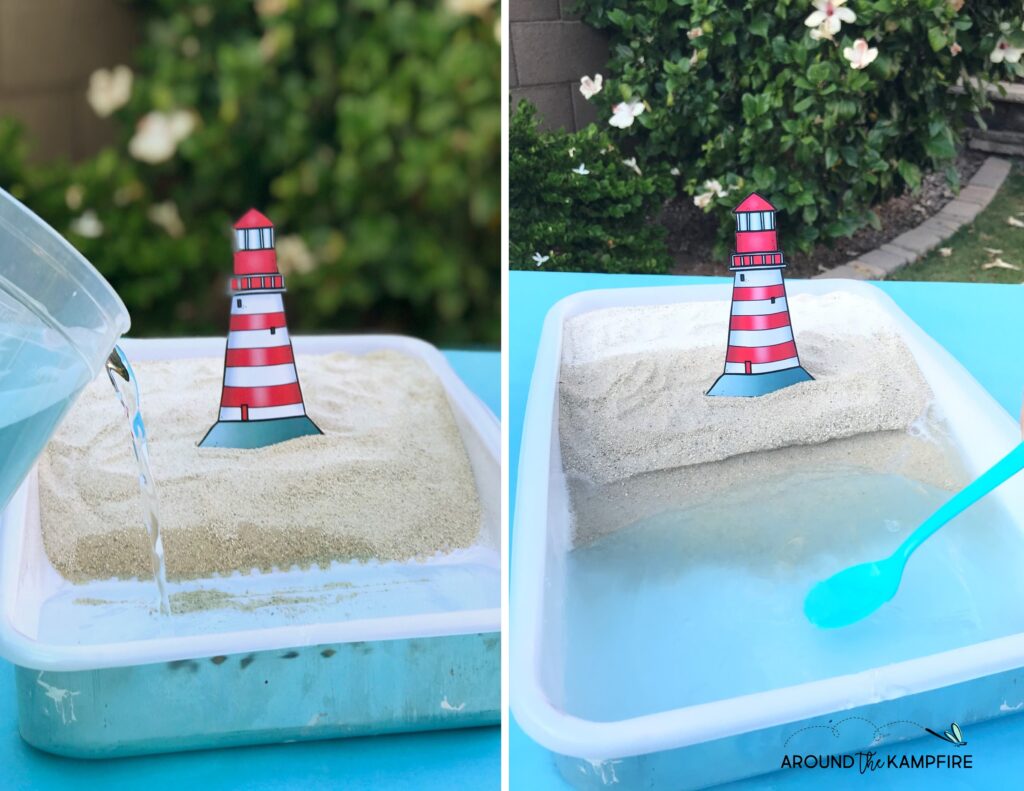Shallow trays or containers (to simulate the coastline)
Craft sticks
Craft foam
Rocks
Screen or mesh
Water
Optional: Sand, clay, or additional materials for modeling
Student lab sheets (for recording observations and designs)
Preparation:
Set up the trays or containers to simulate the coastline.
Provide materials for students to use in their erosion prevention designs.
Introduction:
Discuss the concept of coastline erosion and its causes, such as ocean waves and weathering.
Show a brief video or provide visual examples of erosion and its impact on coastlines.
Simulating Erosion:
Setup:
Arrange the craft sticks, foam, and other materials to create a simple coastline model with a lighthouse at risk.
Fill the tray with a small amount of water to simulate the ocean.
Erosion Simulation:
Simulate ocean waves by gently pouring or splashing water onto the coastline model.
Observe and record the effects of the erosion on the coastline and lighthouse.
Designing Erosion Prevention Solutions:
Design:
Provide students with craft sticks, foam, rocks, screen, and any other materials they might use.
Challenge students to design and construct methods to prevent or reduce erosion and protect the lighthouse. They can use various materials to create barriers, breakwaters, or protective structures.
Implementation:
Apply the designed solutions to the coastline model.
Test the effectiveness of the solutions by simulating ocean waves again and observing any changes in erosion.
Conclusion:
Review the results with the class. Discuss which solutions were most effective in preventing erosion and protecting the lighthouse.
Highlight the importance of engineering and design in solving real-world environmental problems.
Extension:
Explore additional erosion prevention methods used in real-world scenarios, such as seawalls, riprap, and dune restoration.
Invite students to create a presentation or report on their designs and the results of their tests.

